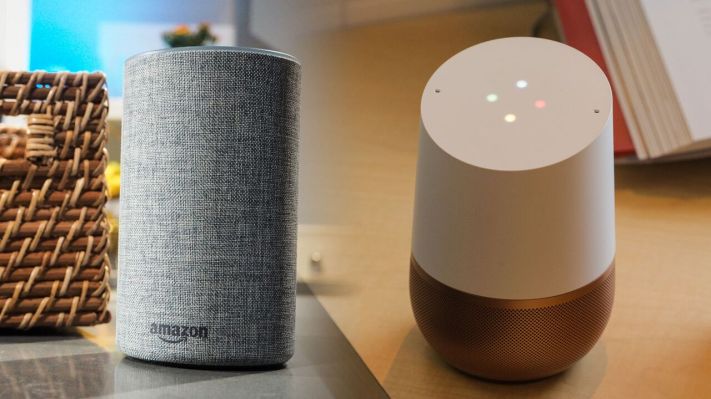Adoption of voice-powered smart speakers is taking off. According to a new report from Juniper Research out this morning, smart devices like the Amazon Echo, Google Home and Sonos One will be installed in a majority – that is, 55 percent – of U.S. households by the year 2022. By that time, over 70 million households will have at least one of these smart speakers in their home, and the total number of installed devices will top 175 million.
The new forecast follows other reports pointing to growth in the voice-enabled speaker market, including one from eMarketer this spring which said that 35.6 million U.S. consumers would use a voice-activated device at least once per month in 2017, representing 128.9 percent growth over last year.
Despite the increased adoption of smart speakers with voice control capabilities, the new report points out that the majority of voice assistant usage won’t be through these in-home devices. Instead, the most usage will occur on smartphones, with over 5 billion assistants installed on smartphones worldwide by 2022.
Voice controls are also expanding across other platforms, including PCs, tablets, connected TVs, cars and wearables. Combined with smartphones and smart speakers, the report forecasts the total number of voice assistant devices will reach 870 million in the U.S. by 2022 – a 95 percent increase from the total of 450 million estimated for 2017.
What’s less clear is how the companies behind today’s voice assistants, like Google and Amazon, will generate revenues from their install base. Beyond the cost of the hardware itself, most voice assistants today are provided to end users for free, though the companies may charge developers for language processing.
However, Juniper pegs advertising as the biggest revenue opportunity for voice assistants, with the expectation that ad spend will climb to $19 billion globally by 2022. The report notes that only some number of voice queries will be product searches, which means advertisers will have to “build a brand’s voice strategy around information provision as well as sales,” explains the research’s author, James Moar.
That part of the forecast may be a little early, however. It’s still early days for this market, and consumers may reject ads coming from their voice assistants. In fact, Amazon seemed to understand this, and already banned the first ad network for Alexa skills from operating on the Alexa platform.
Meanwhile, a research note from RBC Capital Markets released in March had stated that Amazon’s Alexa platform could lead to $10 billion in revenues by 2020; but it had attributed this figure to voice shopping sales and other platform revenues.
Amazon has also been pointed to as the smart speaker market leader in prior reports, with the expectation that it would achieve a 70 percent share this year. Juniper, however, did not break down its forecast by brand.
